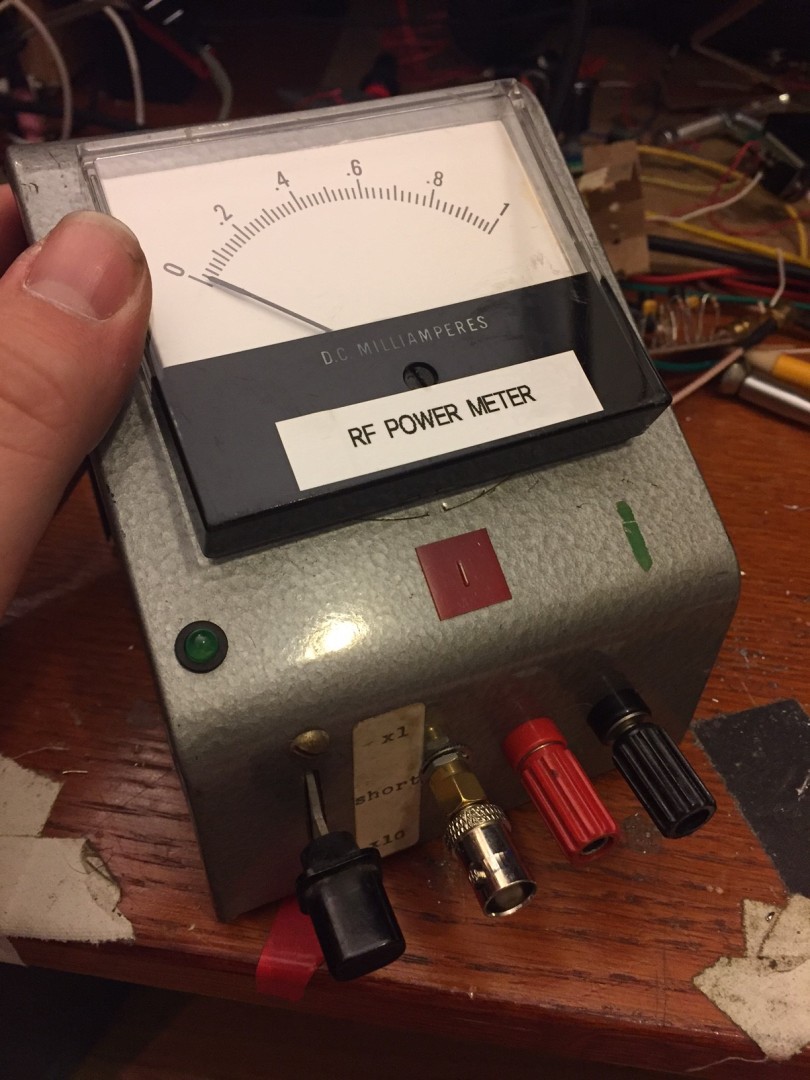This morning, I trekked out to the Hamfesters’ Hamfest in Peotone, IL for the second year in a row. Though the rain threatened to put a damper on the day, the sun had burned through by 10am and left everyone alone.
There was an interesting mix of vendors at this year’s Hamfesters – lots of assorted “hardware” (tool, dental picks, kitchen sink), but also a good number of radios new and old. There was a table absolutely stacked with older 2M gear, mostly Heathkit. A couple newer ICOM rigs, the usual FT-101e’s… nothing too exciting. I scooped up a handful of beefy heatsinks meant for CPU’s, but will be re-purposing them as LED heatsinks in future projects.
I did find two real scores at the Hamfest today. First, from Patrick-J, a secondhand, gov’t-surplus Tektronix TDS644a. It’s a 4-channel digitizing scope, with 500MHz bandwidth at 2GS/s, and I got it for a song.

Not unexpectedly, when I got it home and opened it up, it’s in need of a good re-cap-ing (see, for example, W6KWF’s recent video on this subject.) I’ve already got two packs of electrolytics on their way from the wide wide eBay, so I’ll pick this project back up on a future weekend.

The second find was a small, slant-top box with a 1mA DC meter movement already built into the top. It was configured originally to be a shunt ammeter, but I really just wanted the nice box and meter. Instead of measuring AC current, it’s now set up to measure RF power.

The only external sign that the box has been altered is the presence of a small SMA jack, but the internals are entirely different. I populated and installed one of the AD8307-based power meter PCB’s that I cooked up back in March, fed directly from the external SMA connector. The output feeds the mA meter through an op-amp buffer – I started with a direct connection, but the AD8307, with its 10k-15K output impedance, wasn’t up to the task. The voltage output from the AD8307 is also directly fed to the red external binding post, for measurement with a DMM. I added a little green power LED to remind me to turn the darn thing off. I left the original switch in place, just because it feels right.

The schematic for this project is essentially the same as W7ZOI’s Power Meter published in QST – see that article for details, as well as Wes’ further errata. The meter covers the range of the AD8307’s output voltage, from about -70dBm to +20dBm. As I’ve been working on putting together my BITX homebuild (more on that soon!), I’ve been thinking that having an RF power meter with an analog movement would be very helpful in peaking filters and looking at relative input and output power. And now, I have one!
See you at the ‘fest!
73
